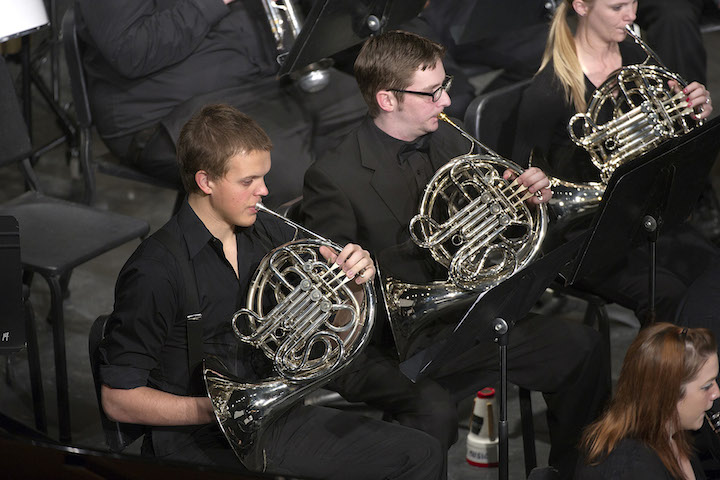
What if someone forgot to let the world know that they have just released one of the year’s finest classical albums? That’s the case with an absolutely brilliant recording of an absolutely brilliant arrangement of J.S. Bach’s Goldberg Variations by Toronto composer Michael Colgrass.
- Classical Music 101: What Does A Conductor Do? - June 17, 2019
- Classical Music 101 | What Does Period Instrument Mean? - May 6, 2019
- CLASSICAL MUSIC 101 | What Does It Mean To Be In Tune? - April 23, 2019
The album — Colgrass Horizons — comes from the unlikeliest of places, where the wind comes whistling down the plain: the University of Central Oklahoma Wind Symphony and Chamber Collegium and their conductor, Brian Lamb.
Its centrepiece is Colgrass’s masterful re-setting of Bach’s work for two-manual harpsichord.
With Bach, more is often less, as mixed orchestral forces muddy the composer’s contrapuntal waters. But Colgrass concerns himself with the absolute essentials of musical communication, a ascetic focus that yields great riches.
His first masterstroke is in small, unlikely pairings of instruments: say marimba and clarinet, or flute and trombone, or cello and French horn — just enough for colour and texture yet entirely devoted to putting the focus on each musical line.
Colgrass’s second masterstroke is in the musical analysis he did before beginning this arrangement. A keyboard player — especially when she or he has all the colours of a modern piano at hand — needs to spend hundreds of hours figuring out which voices to highlight in every one of the variations.
The listener has to be convinced that there is no other way that this music could sound right — even if the interpreter (or, in this case, the arranger) knows that there are, in fact, thousands of other little options and permutations.
Colgrass figured out how he wanted the musical motifs to interweave and play off each other, as well as how he wanted the music to dance, then found the right combinations of instruments. Like Jeremy Denk’s magnificent new recording for piano, these Goldbergs wear a smiling heart on their impeccably tailored sleeve.
That would be the third masterstroke: Lamb and his virtuosic players, who get it all right.
The only disappointment? That Colgrass only arranged 18 variations — and chose to not return us home with a recapitulation of the opening Aria. But, then again, one is always supposed to leave the audience wanting more, not less.
I’ve spent hours with Colgrass’s Goldbergs, and my enjoyment keeps growing on both purely musical as well as intellectual levels. There are many ways to tackle the Goldberg Variations — and this is among the most brilliant.
There are three Colgrass originals on the album that have absolutely nothing to do with Bach, but are examples of masterful musical storytelling.
Two of them are musical frolics for wind ensemble — the first is Zululand (2011) a virtuoso piece for wind orchestra (including percussion) and choir (the University of Central Oklahoma Chorale, in this case) that bubbles with the exultant energy of Leonard Bernstein’s Mambo; the second is Gotta Make Noise (2003), a clever, rhythmically infectious work for middle-school bands and voices. Sandwiched in between is Ghost River (2010), a modern 7-minute tone poem for winds.
They’re great pieces, but make sure you keep the iPod from shuffling them into the Goldbergs.
Finding this gotta-have-it album from Equilibrium records would be a challenge if not for ArkivMusic. You’ll find it here.
John Terauds
- Classical Music 101: What Does A Conductor Do? - June 17, 2019
- Classical Music 101 | What Does Period Instrument Mean? - May 6, 2019
- CLASSICAL MUSIC 101 | What Does It Mean To Be In Tune? - April 23, 2019



